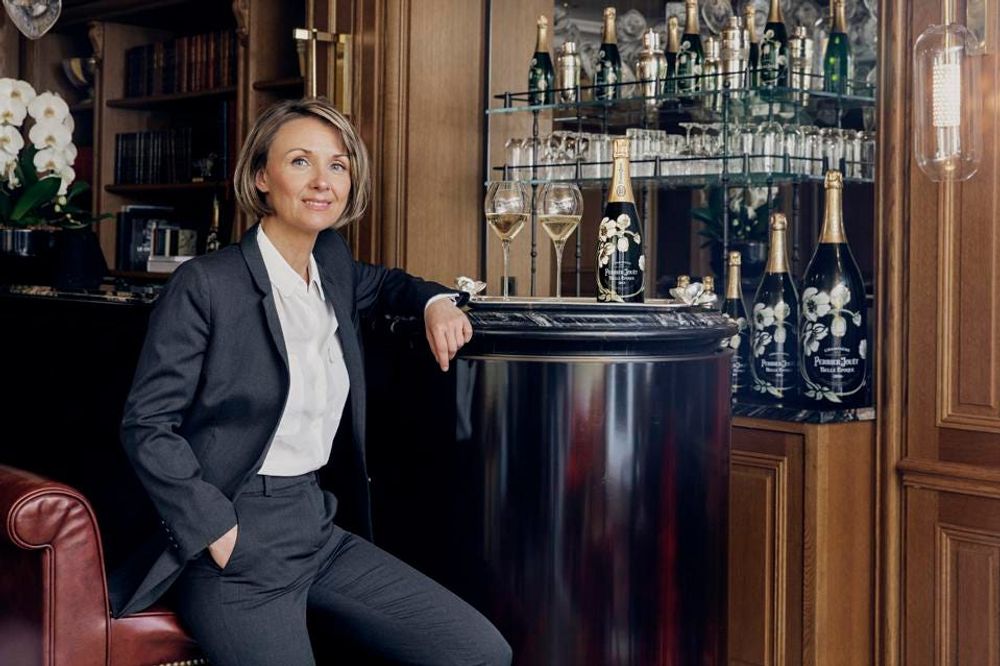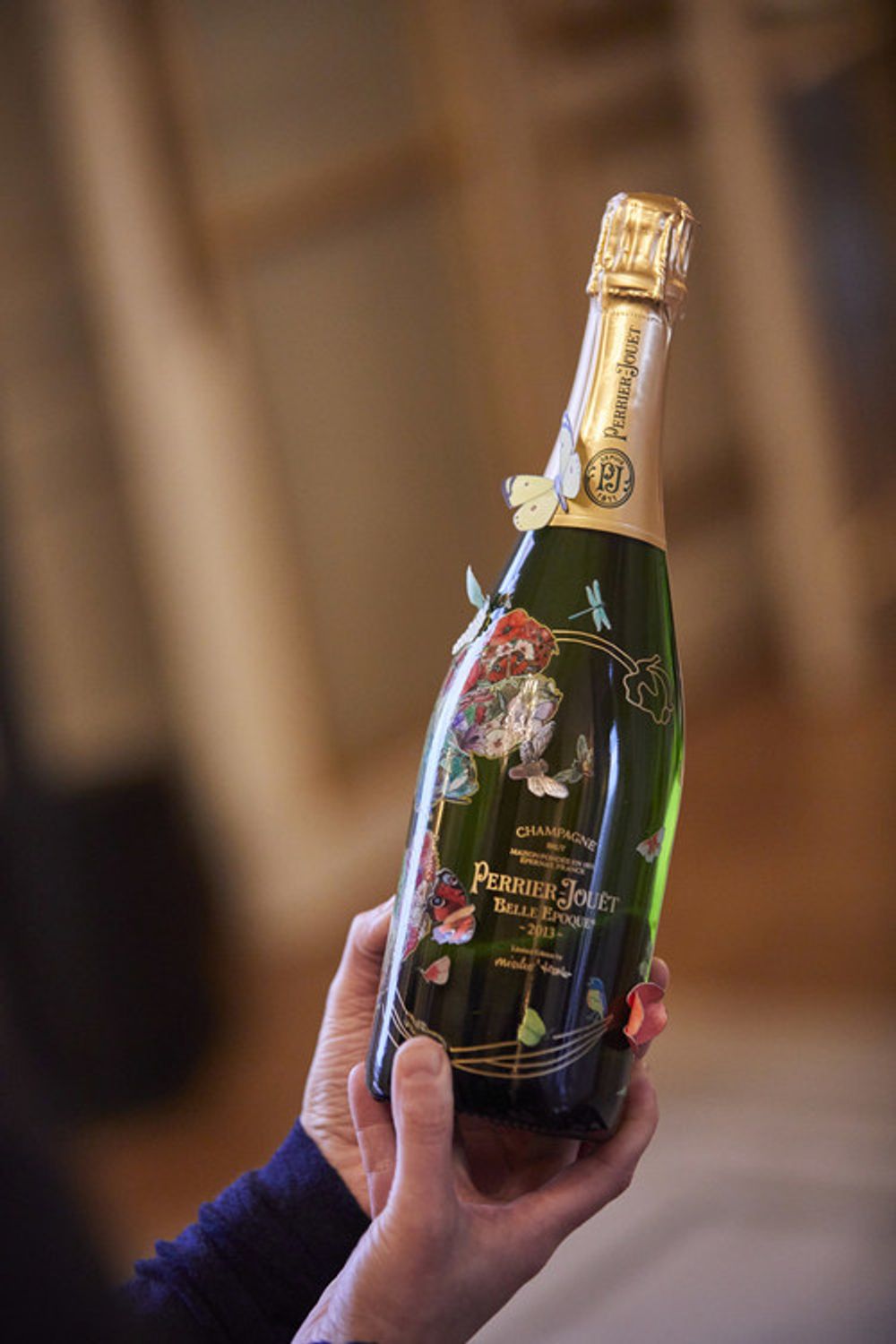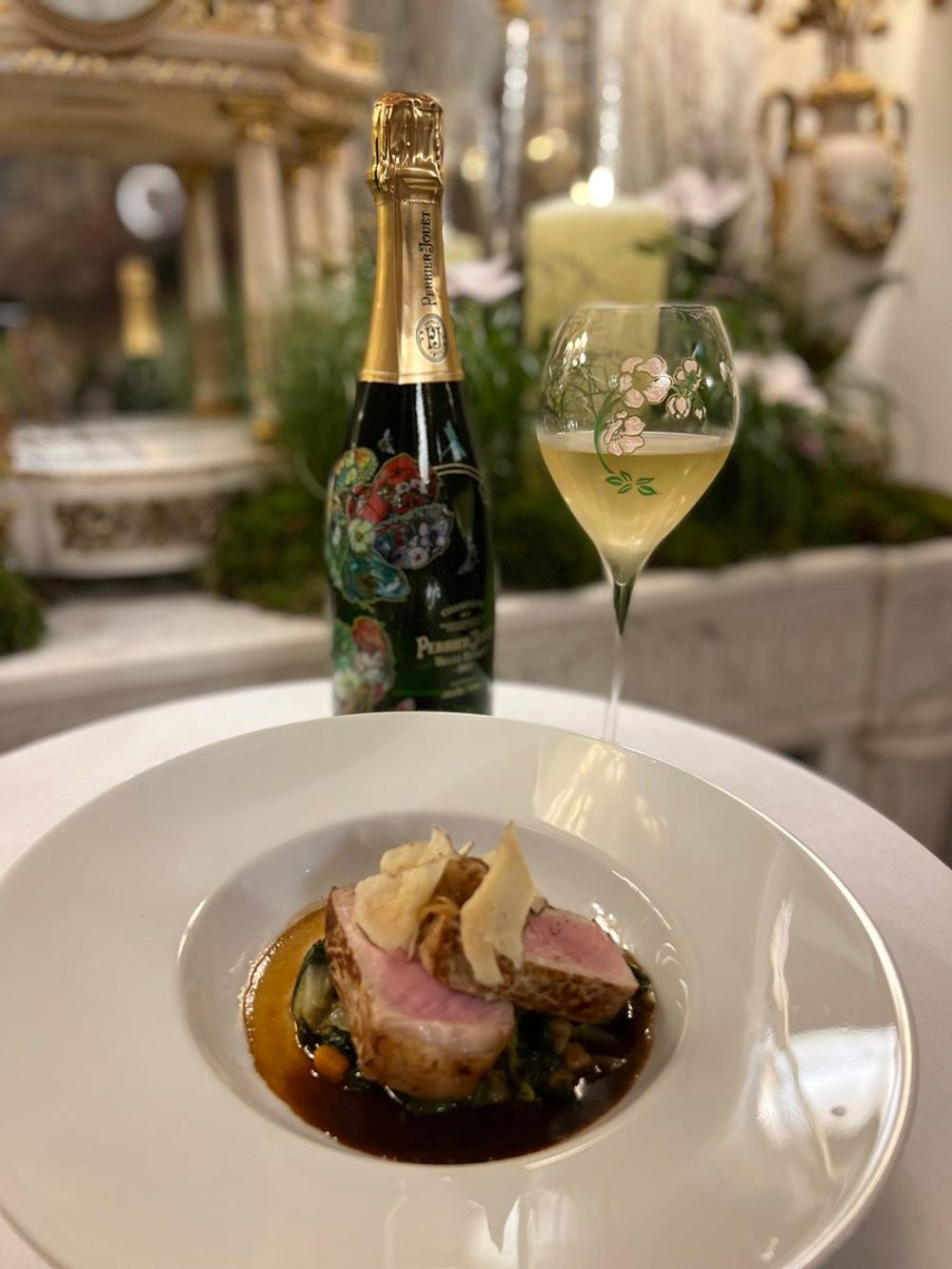If you are going to celebrate 120 years of Champagne Perrier-Jouët La Belle Époque then you have to do to it at an extravagant lunch in Paris – with lots of back vintages to compare.
Just try to talk to Séverine Frerson, chief winemaker at Champagne Perrier-Jouët, and not have a conversation about flowers. It’s literally impossible. From honeysuckle to marigolds to peonies to linden to orchids, she loves to talk about flowers. Frerson has a beautiful nose, in every sense of the word, and for the last four years, she has used both her mastery of oenology and her love of flowers to craft the beautiful wines of Champagne Perrier-Jouët. But for two reasons, it’s natural that she is at the helm of this legendary house, as the connection between Perrier-Jouët and flowers and nature extend back to more than two centuries, and because of her own passion for art and nature.

Séverine Frerson, chief winemaker at Champagne Perrier-Jouët,
Perrier-Jouët was founded in 1811 by Pierre Nicolas Perrier and his wife, Rose Adélaine Jouët. Based in Epernay, Champagne Perrier-Jouët has been owned by Pernod Ricard since 2005. The Pernod Ricard Group also owns such iconic brands as Absolut, Jacob’s Creek and The Glenlivet, and is today the second biggest wine & spirits company worldwide, representing a comprehensive portfolio of 240 brands available in more than 160 countries.
Perrier-Jouët owns 66 hectares of vineyards, located primarily in the Grand Cru villages of Cramant, Chouilly, Avize, Mailly and Verzenay, and sources grapes from several trusted long-term partners. The house has always had a focus on Chardonnay, “far before it was fashionable,” says Frerson.
The house has been certified both “Sustainable Viticulture in Champagne” and “Haute Valeur Environnementale” since 2016. This is particularly important to the house, especially since founder Pierre-Nicolas Perrier and his son Charles were both botanists and horticulturists who introduced progressive ideas about viticulture for the time. Continuing in this spirit, the house currently uses no herbicides and is committed to both preserving and promoting biodiversity.
Belle Époque
Perrier-Jouët is one of the most emblematic examples of French heritage, and for many years, the house has been intrinsically associated with both the “Belle Époque” period and the “Art Nouveau” movement, two cultural and artistic periods that lived alongside each other for more than forty years. In France, the “Belle Époque” period is considered to have existed from the period between 1871, the end of the Franco-Prussian War, and the start of the First World War in 1914. The Art Nouveau movement became an international style of art, architecture, and applied art, focusing especially on the decorative arts, and was popular during the same period as the Belle Époque, with a focus on academic art and eclecticism. The natural shapes and structures of flowers and plants and insects and animals were used in Art Nouveau, and at Perrier-Jouët, a commitment to those values and convictions is much more than just artsy talk.

Champagne Perrier-Jouët at Hôtel de Crillon
As Art Nouveau took Europe by storm in the late 19th century following its huge success at the Exposition Universelle in Paris, among its many admirers was Henri Gallice, then president of Perrier-Jouët, who commissioned the design of the brand’s now iconic floral-embossed bottle featuring white and pink anemones hand-painted by Emile Gallé, founder of the Nancy School that spearheaded the movement in France. The anemone is also a symbol of biodiversity, a cause that Perrier-Jouët has supported and cherished for more than two centuries.
The first vintage of Belle Époque was crafted in 1902, and this year marks the 120th anniversary of this legendary cuvée. The iconic bottle itself was created in that same year. Perrier-Jouët has never been keen on promoting vulgar logos or branded glassware. Those flowers speak for themselves.
120 years…
This week in Paris at the celebrated Hôtel du Crillon located on the Place de la Concorde, founded in 1910 and reopened in 2017 after four years of renovation, Frerson was joined by César Giron, president of Martell Mumm Perrier-Jouët, to welcome a select group of guests who were fortunate enough to celebrate the 120th anniversary of Belle Époque with a special menu prepared by acclaimed chef Pierre Gagnaire, accompanied by several historical vintages of Champagne Perrier-Jouët Belle Époque.Pierre Gagnaire has enjoyed a personal relationship with Perrier-Jouët for many years and works closely with Frerson on several projects.
Frerson is the eighth chief winemaker at Perrier-Jouët, only the second woman to be chief winemaker at the estate since co-founder Rose Adélaide Jouët in 1811. Following her career as a member of the winemaking team at Champagnes Piper-Heidsieck & Charles Heidsieck, Frerson worked alongside Hervé Descamps, chief winemaker at Champagne Perrier-Jouët since 1993, for more than two years, before becoming chief winemaker herself in 2020.
When Frerson joined the house in 2018, she decided that she also wanted to champion regenerative viticulture. Frerson has since become one of the leading voices in Champagne on the subject. She says: “I like to discuss one’s relationship with nature and about the essence of life itself.” When it comes to tasting wines, Frerson likes to emphasise texture. Regarding this important anniversary, she says: “My favourite cuvée is Perrier-Jouët Belle Epoque Blanc de Blancs. It is a cuvée for connoisseurs, the absolute quintessence of Chardonnay.”

A perfect pairing from this week’s special event at Paris’ Hôtel du Crillon
For the anniversary limited edition of Perrier-Jouët Belle Epoque 2013, Frerson has changed the dosage liqueur which is generally added to this cuvée. She has developed a liqueur derived from a 100% Chardonnay wine, crafted from the very finest grapes in the Perrier-Jouët vineyard: those produced by Bouron-Leroi, a legendary plot acquired by the founders of the House, which is situated within the Grand Cru village of Cramant in the Côte de Blancs.
Frerson feels a particular affinity with Rose-Adélaïde Jouët, founder of the house with Pierre-Nicolas Perrier. She identifies with certain facets of the latter’s personality, especially her assertive and independent character. Browsing through the archives of Champagne Perrier-Jouët, Frerson discovered that Rose-Adélaïde Jouët occupied a prominent place in the reception of visitors and in the presentation of the House and its cuvées. Like Frerson, she attached great importance to exchange and human contact.
Champagne Perrier-Jouët’s “Maison Belle Époque” in Epernay, a charming estate where both art and nature live in harmony, can be visited by appointment only. As one of the most approachable chief winemakers in Champagne, there is a chance that you’ll have the chance to meet Frerson personally.
When asked about her attachment to Perrier-Jouët, she says: “I have always appreciated art, nature, Chardonnay, and meeting different people, so I think this is where I am supposed to be.”
- Find out more about 120 years of Belle Époque here.































